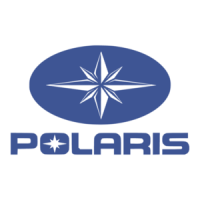
Do you have a question about the Polaris Universal Maxx and is the answer not in the manual?
| Touchscreen | Yes |
|---|---|
| Bluetooth | Yes |
| USB Port | Yes |
| SD Card Slot | Yes |
| FM Radio | Yes |
| GPS Navigation | Yes |
| Rear View Camera Input | Yes |
| Steering Wheel Control | Yes |
| Display Size | 7 inches |
| Resolution | 800x480 |
| Supported Media Formats | MP3, WMA, MP4, AVI |
Details of warranty coverage for the product, including what is covered.
List of conditions and actions that will void the product warranty.
Description of the device's main interface and its icons.
Instructions on how to swipe left to view additional applications.
Step-by-step guide on how to connect the device to a Wi-Fi network.
Instructions for pairing the device with a Bluetooth-enabled mobile phone.
Guide on how to automatically scan and manually save radio stations.
How to set the device's date, time, and time zone automatically or manually.
Instructions for signing into and using the Google Play Store for app downloads.
Guide to connecting Android and iPhone devices via USB for control or mirroring.
Connecting to Wi-Fi for Android and iPhone mirroring, including personal hotspot use.
Instructions on receiving and making phone calls via Bluetooth.
Steps for pairing, managing, and switching between Bluetooth devices.
Configuration options for Bluetooth name, PIN, auto-answer, and auto-connect.
How to play music files from a USB drive, including controls and menus.
Instructions on how to view movie files stored on a USB drive.
How to browse, copy, cut, and delete files from internal and external storage.
Instructions for inserting and playing CDs.
Instructions for inserting and playing DVDs.
Details on using the pre-installed Tom Tom navigation software.
Details on using the pre-installed HEMA off-road navigation software.
Information on using Google Maps for street navigation, requiring internet.
Description of various built-in applications like DVR, APK Installer, Clock, and GPS Info.
Using Google Chrome, Downloads, Gmail, Google Search, and Gallery.
Using voice commands with OK Google for device interaction.
Adjusting magnification, font size, display size, and mono audio.
Configuring navigation defaults, driving settings, extra settings, and steering wheel keys.
Accessing and configuring factory settings, including startup logo and cameras.
Using the feature to view two applications simultaneously on the screen.
Connecting a second reversing camera or other AV source via RCA.
Connecting and enabling a front camera input for viewing.
Connecting and using Apple CarPlay and Android Auto via a USB add-on.
Description of the on-screen touch buttons and their functions.
Identification and function of physical buttons, knobs, and ports.
Information on monitor, OS, CPU, RAM, storage, and hardware components.
Details on GPS software, frequency ranges, and radio pre-set capacity.
USB support, file formats, and Bluetooth/Wi-Fi standards.
Input/output specifications for cameras, AV, CD/DVD, Wi-Fi, and Bluetooth.
Information on DIN size, screen adjustability, and mounting considerations.
List of included accessories and the power harness wiring diagram.
Specific wiring schematics for connecting various unit components.
Important notes, warnings, and requirements for safe and proper installation.
Wiring instructions for reverse and front cameras and 2-camera setups.
Guidelines for mounting the main unit chassis and attaching the detachable screen.
Wiring prerequisites for non-CAN bus vehicles and module solutions for CAN bus.
Steps to program steering wheel buttons to specific device functions.
List of available functions that can be assigned to steering wheel controls.
Diagram showing the physical size and measurements of the unit.
Notes and warnings regarding the installation and compatibility of external applications.
Steps for contacting support and returning the unit for assessment or repair.